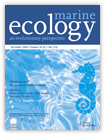Epizoan Communities on Marine Turtles
I. Bivalve and Gastropod Mollusks
Abstract
Abstract. Marine turtles harbour a variety of epizoa, some of which are specific to these hosts, but shelled gastropod and bivalve mollusks were previously unrecorded on marine turtles. Thousands of turtles of five species from all major oceans were examined. Loggerheads, Caretta caretta, from Greece and the states of Georgia and Florida, USA, were the most remarkable hosts to mollusks. At least 15 species of bivalves and 5 species of gastropods were found on turtles. Many turtles hosting mollusks carried only one species and few individuals. Edible oysters, the most common molluscan epizoan on Grecian Loggerheads, may grow to more than 10cm in diameter, so in some cases the mollusks may survive for several years on the turtle. Large epizoan bivalves may in turn serve themselves as substrates for epizoa, molluscan or otherwise. There are no known obligate relationships between turtles and mollusks, although there may be a parasitic relationship between the Loggerhead turtle, a spirorchid blood fluke, and a gastropod intermediate host. It is unknown if turtles carrying mollusks are at a disadvantage.




